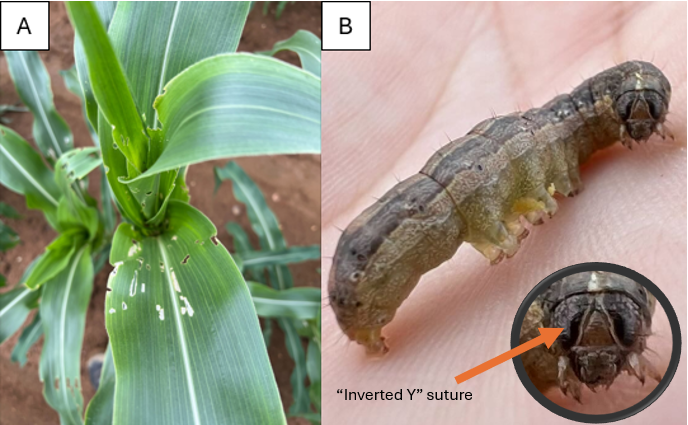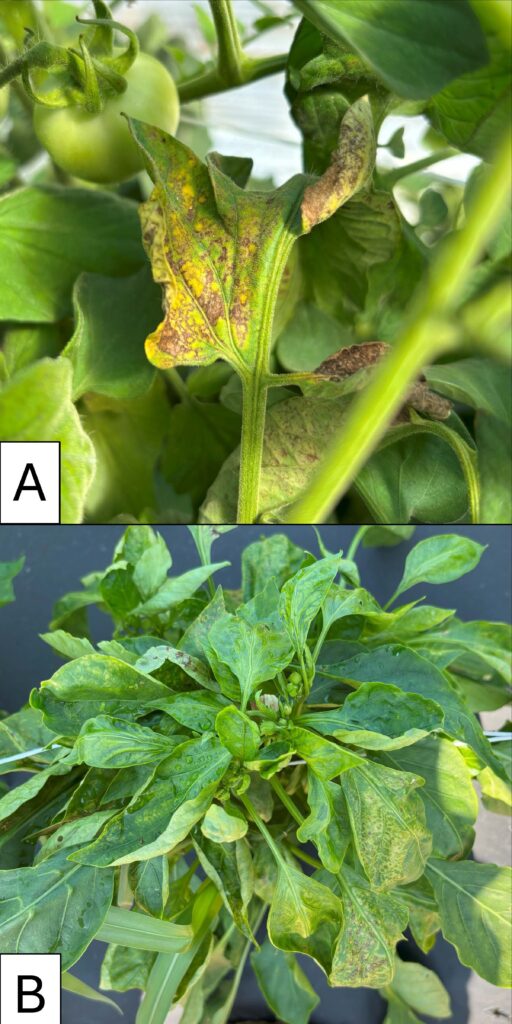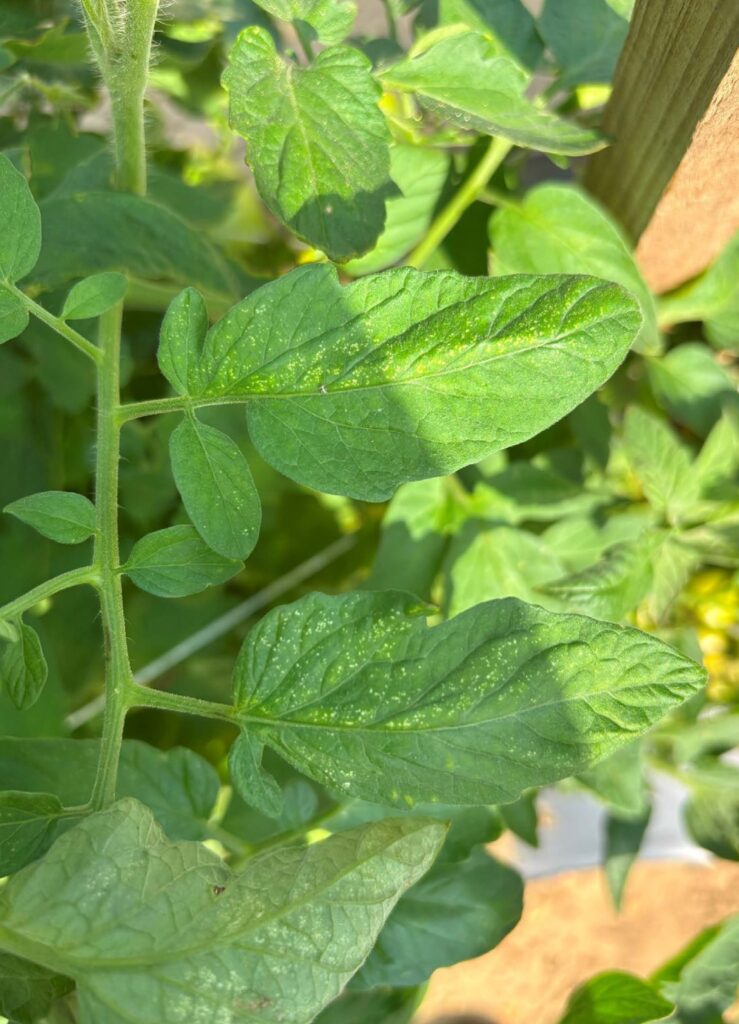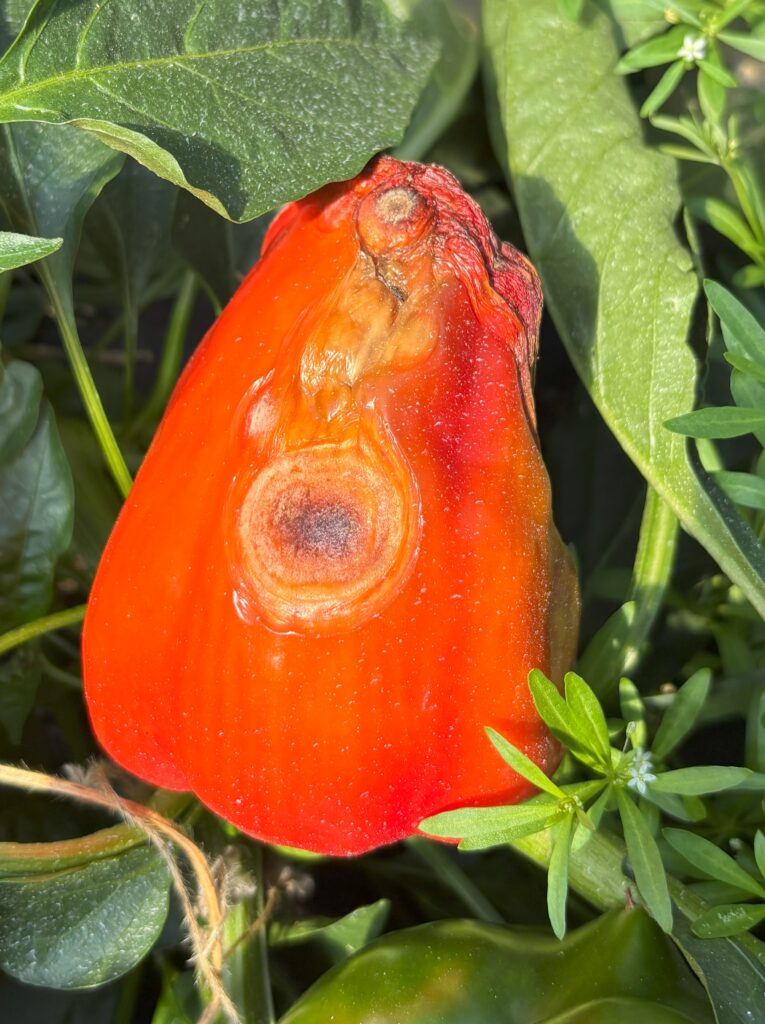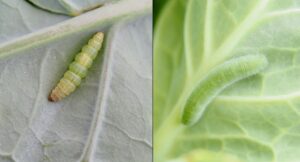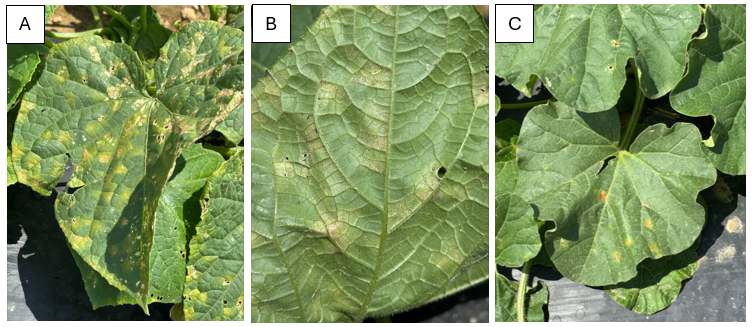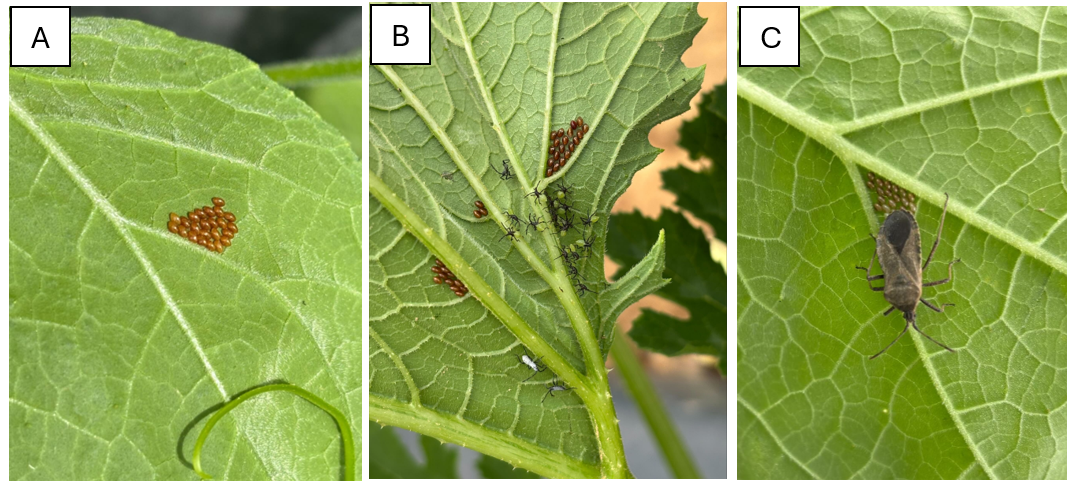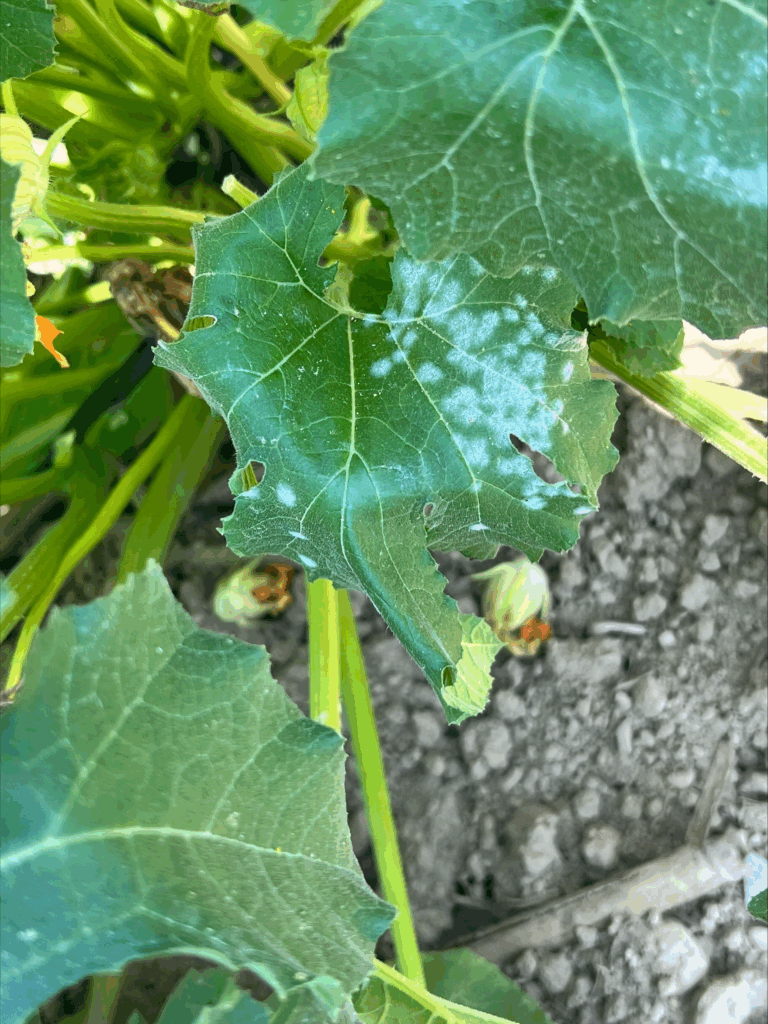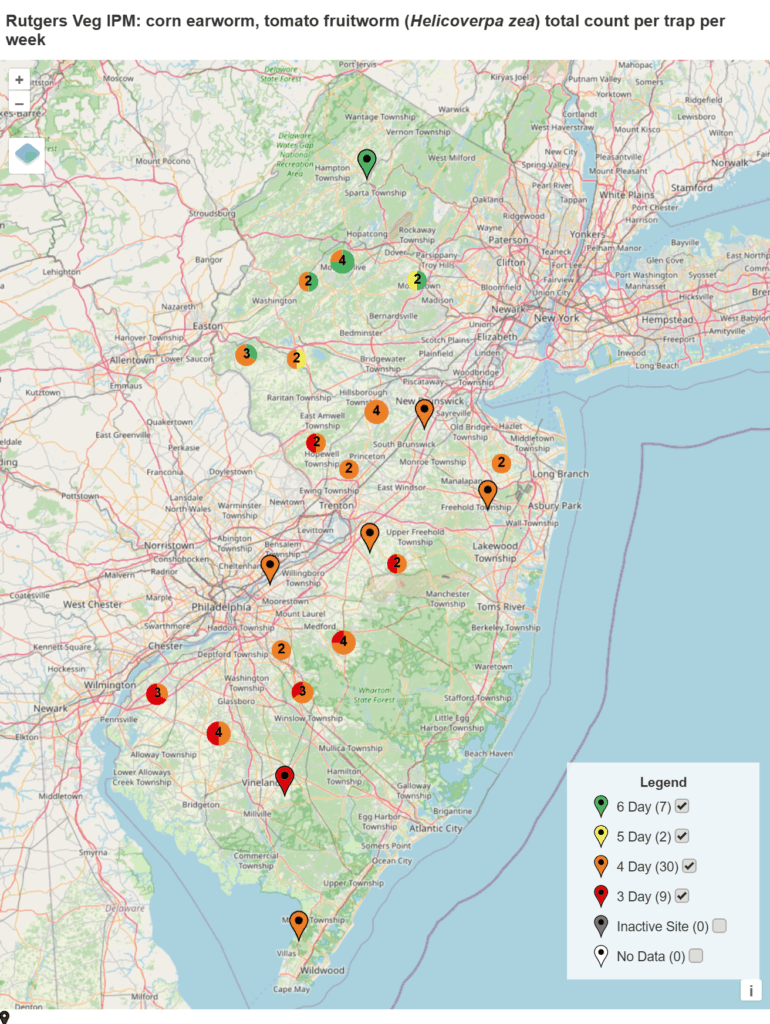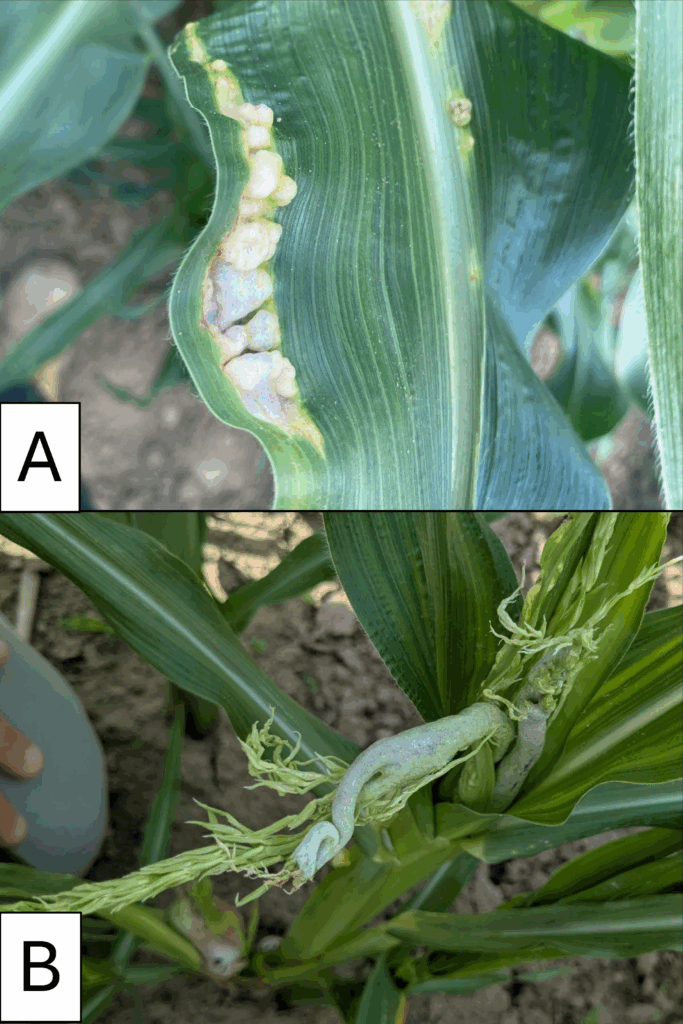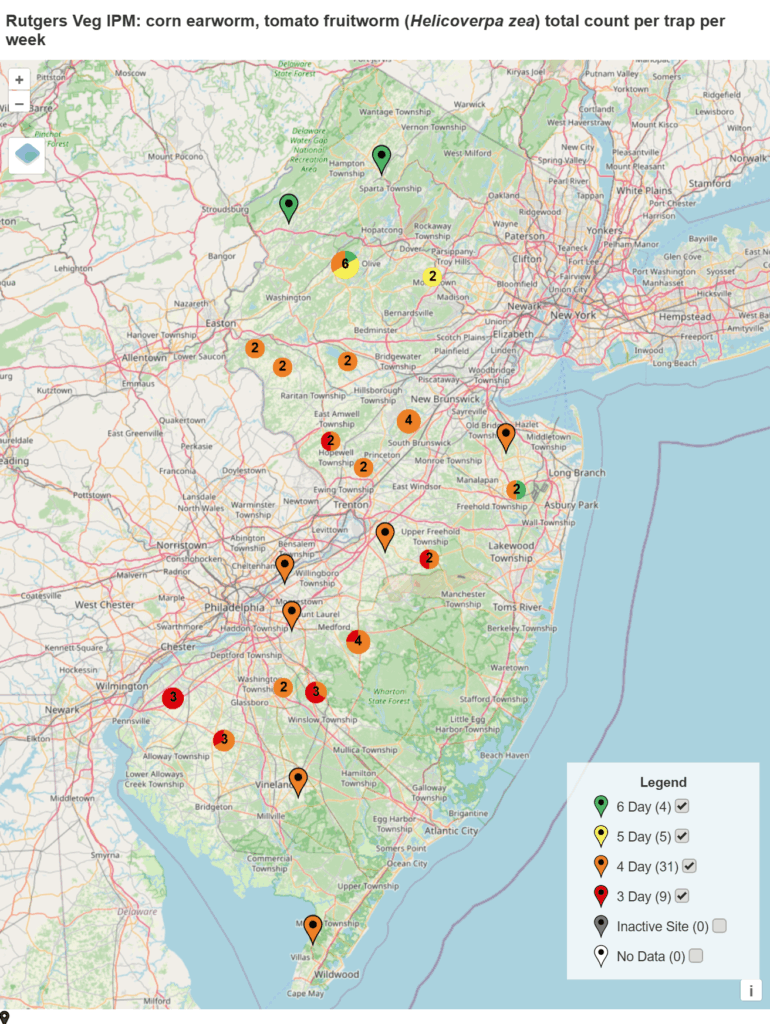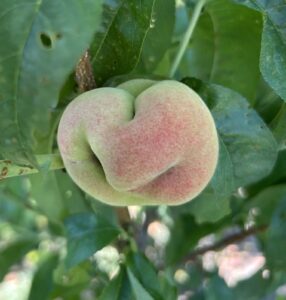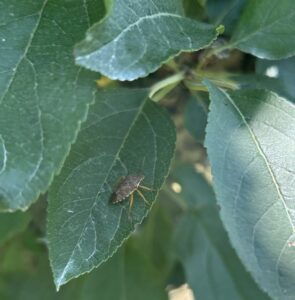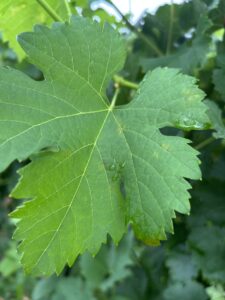Peach:
Oriental Fruit Moth: A biofix point for OFM was set on 4/2 in southern counties, and on 4/17 in northern counties. The third generation timings are over in all regions. Additional treatments should be made if trap captures are over 6 moths per trap.
| Insecticide Type | |||
| County/Region | Degree Days by 8/11 base 45 | Conventional
2000-2100 2350-2450 |
Diamide
2025-2150 2375-2450 |
| Gloucester – Southern | 3086 | 1st –past
2nd –Past |
1st –past
2nd –past |
| Middlesex – Northern | 2885 | 1st –past
2nd –past |
1st –past
2nd –past |
Scale Insects: Scale crawler emergence is past peak and declining. White Peach scale has a third generation in September and San Jose scale may have a third generation in October. Options at this point include Assail, Belay (Group 4A); and the bioinsecticide Venerate. These products may provide some late season suppression where fruit damage is observed. Venerate has a 0-day PHI, making it useful for blocks near or at harvest.
Apples and Pears:
Diseases: Summer scab, rots and sooty blotch and fly speck are the main targets at this time. Captan plus a phosphorous acid like Prophyt can slow scab development as well as provide good summer disease control. Merivon and Luna Sensation are effective materials for summer diseases to use close to harvest.

Figure 1. Brown marmorated stink bug first instar nymphs recently emerged from egg masses. Photo by Kaitlin Quinn.
Brown Marmorated Stink Bugs: Brown Marmorated Stink bugs are present at low to moderate levels in orchards statewide (Figure 1). See the NJ Tree Fruit Production guide for effective materials.
Codling Moth (CM): A biofix was set for CM on April 28th in southern counties, and April 30 in Northern counties. Second generation treatments according to the degree day model are now over. Additional treatments should be made if trap captures are over 5 moths/trap. Some orchards have had continuing trap captures above threshold.
Scale Insects: For San Jose scale see the peach section above.
Phenology Table: Based on annual observations made in Gloucester County.
| Pest Event or Growth Stage | Approximate Date | 2025 Observed Date |
| Bud Swell (Redhaven/PF-17) | March 23 +/- 15 Days | March 30 |
| 1/4″ Green Tip Red Delicious | March 31 +/- 13 Days | March 30 |
| Pink Peach (Redhaven/PF-17) | April 4 +/- 15 Days | April 1 |
| Tight Cluster Red Delicious | April 9 +/- 13 Days | April 5 |
| Full Bloom Peach (Redhaven/PF-17) | April 9 +/- 14 Days | April 10 |
| Pink Apple (Red Delicious) | April 14 +/- 12 Days | April 16 |
| Full Bloom Apple (Red Delicious) | April 22 +/- 11 Days | April 25 |
| Petal Fall (Redhaven) | April 22 +/- 10 Days | April 19 |
| Petal Fall (Red Delicious) | April 27 +/- 13 Days | May 2 |
| Shuck Split (Redhaven) | April 30 +/- 11 Days | April 26 |
| Pit Hardening | June 15 +/- 9 Days | June 15 |
Tree Fruit Trap Captures – Southern Counties
| Week Ending | STLM | TABM-A | CM | BMSB | OFM-A | DWB | OFM-P | TABM-P | LPTB | PTB |
| 4/5/2025 | 0 | 0 | 0 | 0 | 0 | 0 | 0 | 0 | 0 | 0 |
| 4/12/2025 | 0 | 0 | 0 | 0 | 6 | 0 | 0 | 0 | 0 | 0 |
| 4/21/2025 | 0 | 0 | 0 | 0 | 36 | 0 | 1 | 0 | 0 | 0 |
| 4/27/2025 | 25 | 0 | 0 | 0 | 24 | 0 | 5 | 0 | 1 | 0 |
| 5/2/2025 | 517 | 0 | 4 | 0 | 12 | 0 | 6 | 0 | 13 | 0 |
| 5/9/2025 | 159 | 4 | 10 | 0 | 3 | 16 | 5 | 4 | 46 | 0 |
| 5/16/2025 | 91 | 11 | 6 | 0 | 1 | 36 | 2 | 14 | 69 | 0 |
| 5/23/2025 | 299 | 21 | 3 | 0 | 1 | 23 | 1 | 26 | 23 | 0 |
| 5/30/2025 | 399 | 14 | 2 | 0 | 0 | 41 | 1 | 11 | 10 | 3 |
| 6/6/2025 | 733 | 13 | 1 | 0 | 0 | 36 | 2 | 12 | 29 | 1 |
| 6/13/2025 | 684 | 19 | 2 | 1 | 0 | 81 | 2 | 17 | 22 | 8 |
| 6/20/2025 | 724 | 24 | 2 | 0.5 | 1 | 60 | 1 | 23 | 19 | 12 |
| 6/27/2025 | 932 | 5 | 1 | 0.8 | 1 | 40 | 0 | 5 | 24 | 14 |
| 7/4/2025 | 643 | 0 | 0 | 0.75 | 1 | 17 | 0 | 0 | 6 | 16 |
| 7/11/2025 | 194 | 0 | 0 | 0.5 | 0 | 18 | 8 | 0 | 24 | 15 |
| 7/18/2025 | 190 | 0 | 0 | 1 | 0 | 16 | 2 | 1 | 5 | 12 |
| 7/25/2025 | 222 | 2 | 1 | 1.6 | 0 | 16 | 1 | 2 | 12 | 21 |
| 8/1/2025 | 450 | 1 | 0 | 2 | 1 | 24 | 2 | 1 | 21 | 18 |
| 8/8/2025 | 523 | 2 | 1 | 2 | 0 | 35 | 5 | 2 | 30 | 19 |
Tree Fruit Trap Captures – Northern Counties
| Week Ending | STLM | TABM-A | CM | BMSB | OFM-A | DWB | OFM-P | TABM-P | LPTB | PTB | AMBROSIA BEETLE |
| 4/5/2025 | 387 | 0 | 0 | 0 | 0 | 0 | 0 | 0 | 0 | 0 | 0 |
| 4/21/2025 | 435 | 0 | 0 | 0 | 0 | 0 | 1.3 | 0 | 0 | 0 | 0 |
| 4/27/2025 | 26 | 0 | 0 | 0 | 0 | 0 | 25 | 0 | 0 | 0 | 72 |
| 5/2/2025 | 86 | 0 | 0.33 | 0 | 72.5 | 0 | 47.2 | 0 | 0 | 0 | 136 |
| 5/9/2025 | 56 | 0 | 5.3 | 0 | 58.8 | 0 | 22.9 | 0 | 0 | 0 | 145 |
| 5/16/2025 | 13.75 | 2.6 | 7.3 | 0 | 4 | 0 | 5 | 0 | 0 | 0 | 50.5 |
| 5/23/2025 | 4.8 | 10.3 | 10.5 | 0 | 0.6 | 31.25 | 4.2 | 0 | 14.6 | 1 | 22.2 |
| 5/30/2025 | 2.2 | 4.8 | 1.8 | 0 | 0 | 12.4 | 9.6 | 0 | 9.6 | 1.9 | 22.1 |
| 6/6/2025 | 3 | 4.83 | 2.8 | 0.25 | 0 | 20 | 4.1 | 0 | 21.2 | 1.8 | 40.3 |
| 6/13/2025 | 65 | 20 | 11.4 | 0.6 | 0 | 12.3 | 4 | 0 | 10.5 | 1.5 | 59.2 |
| 6/20/2025 | 26 | 26 | 8 | 0.75 | 1 | 13 | 4.5 | 0 | 11 | 0.75 | 52 |
| 6/27/2025 | 145 | 19 | 6 | 1.3 | 6 | 35 | 5.4 | 0 | 16 | 1.6 | 38 |
| 7/4/2025 | 212 | 6 | 3 | 0.6 | 12.5 | 40 | 2 | 0 | 8.4 | 1.1 | 27 |
| 7/11/2025 | 125 | 2.5 | 0.5 | 0.14 | 5 | 41 | 3 | 0 | 20 | 4.5 | 48 |
| 7/18/2025 | 64 | 0.5 | 0.4 | 0.16 | 2 | 42 | 2 | 0 | 8.4 | 1.9 | 64 |
| 7/25/2025 | 110.5 | 0.4 | 2.3 | 0.24 | 7.5 | 44 | 4 | 0 | 6.8 | 12.2 | 69 |
| 8/1/2025 | 132 | 0.5 | 2.8 | 0.4 | 5.7 | 42.5 | 2.9 | 0 | 8 | 6.2 | 71.5 |
| 8/8/2025 | 157 | 1.9 | 0.6 | 0.41 | 6 | 27.8 | 8.3 | 0 | 10.8 | 5.5 | 78 |
Grapes:
Diseases: Grapes are beginning veraison in southern counties. Disease management continues to focus on downy mildew (Figure 2), and also powdery mildew, bunch rot, and black rot. Refer to the NJ Commercial Grape Production Guide for information on control.

Figure 2. Downy mildew on grape.
Grape Berry Moth: The timing for the third generation is past. In some hot summers a fourth generation may occur; however no further treatments should be needed, especially where insecticides are being applied for Spotted lanternfly.
Spotted Lanternfly: Spotted lantern fly adults are now appearing in vineyards. As we move into September adult migration will increase and at that point growers should apply materials with long residual efficacy. More information on biology and control can be found from Penn State.
Spotted-Wing Drosophila: Trap counts continue to remain high in blueberries in southern counties. Monitoring efforts have shifted to grapes as veraison progresses and ripe fruit becomes vulnerable to infestation.
For weekly reports on blueberry pests and recommendations read the Rutgers Blueberry Bulletin.

